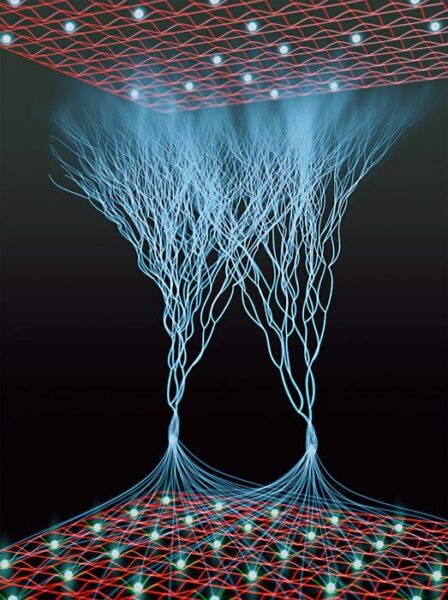JILA fellow, National Institute of Standards and Technology (NIST) physicist, and University of Colorado Boulder Physics Professor Adam Kaufman and his team, along with collaborators at NIST, have demonstrated a novel method of boson sampling using ultracold atoms in a two-dimensional optical lattice of intersecting laser beams. The research, recently published in Nature, marks a significant leap beyond previous achievements in computer simulations or with photons.
Applying Optical Tweezers to Large-Scale Hubbard Systems
The researchers used cutting-edge techniques, including optical tweezers and advanced cooling methods, to prepare specific patterns of up to 180 strontium atoms in a 1,000-site lattice. By minimizing the atoms’ movement and ensuring they remained in their lowest energy state, the team reduced noise and decoherence, common challenges in quantum experiments.
“Optical tweezers have enabled ground-breaking experiments in many-body physics, often for studies of many-interacting atoms, where the atoms are pinned in space and interacting over long distances,” said Kaufman. “However, a large class of foundational many-body problems—so-called ‘Hubbard’ systems—arise when particles can both interact and tunnel, quantum mechanically spreading out in space. Early on in building this experiment, we had the goal of applying this tweezer paradigm to large-scale Hubbard systems— this publication marks the first realization of that vision.”
Confirming High Fidelity through Scaling Tests
Due to the complexity of boson sampling, directly verifying the correct sampling task for experiments with 180 atoms is not feasible. To overcome this issue, the researchers sampled their atoms at various scales, comparing measurements to simulations involving reasonable error models for their experiment at an intermediate scale.
“We do tests with two atoms, where we understand very well what’s happening. Then, at an intermediate scale where we can still simulate things, we can compare our measurements to simulations involving reasonable error models for our experiment. At large scale, we can continuously vary how hard the sampling task is by controlling how distinguishable the atoms are and confirm that nothing dramatic is going wrong,” said first author and former JILA graduate student Aaron Young.
The high quality and programmable preparation, evolution, and detection of atoms in a lattice demonstrated in this work can be applied to situations where the atoms interact, opening new approaches to simulating and studying the behavior of real, and otherwise poorly understood, quantum materials.


